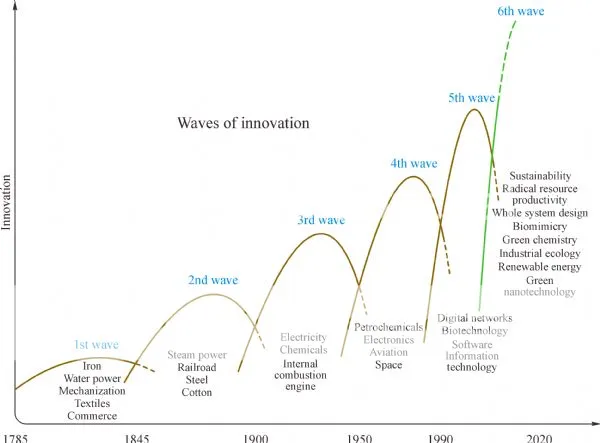Rather abruptly in May, I learned the company I was working for was shutting down its business development team and retrenching the two senior business development managers. No prizes for guessing that I was one of those! Time for some re-invention and inspiration from the broader world around me, including nature and Steemit.
Design a business from a flower? Really?

The simple arum lily, so ubiquitous in South Africa, gives some inkling that a clear outcome can emerge from complexity. The lily inspires with its elegant form and sumptuous colouring. We see shapes such as the spiral so often in nature and because it sits in a familiar entity such as a flower (or a snail or seaside shell, for that matter), we tend not to consider the generations and generations of genetic variation that got the entity to that niche in its ecosystem - we look at it and say "that looks nice". Similarly, the juxtaposition of the deep ochre spadix and full-cream milky white spathe (I just learned those terms now) may look artful, but it will have taken the arum lily genus generations to get to this configuration which attracts just the right kind of pollinators.
When I got married in Montreal in 1987, I wanted Calla lilies in my flower theme because I thought they were unique, rare and exotic - ah, the arrogance of youth. Maybe they were rare in Montreal and maybe the florist overcharged, but in South Africa these puppies grow in ditches. So there was a hint for me - whatever they're doing in their ecosystem, it's working for them. They thrive.
What the heck does that have to do with starting a business?
Well, we want something which is simple, elegant and easy for pollinators (clients (!)) to understand and be attracted to.
We want to learn from previous generations.
And we want to thrive and be sustainable.
Know where we're going
My Steemit tagline drops a big hint about what I care about and love doing, and how I like to do it: "Infrastructure business developer, passionate about Africa and keen to crypto into the continent, love connecting dots...and all things systemic". So infrastructure, and private investment in infrastructure, are key. Doing it in Africa is key. Crypto? A new wrinkle, but since the sustainability of infrastructure depends on its affordability both to the provider and the user of the infrastructure, it makes sense that the user be able to pay for it sustainably over time. It doesn't make sense for electricity payments to cripple small business in rural Tanzania before they get going. It does make sense for the provider of the electricity to make enough money back from selling electricity to their client base to maintain their equipment, reinvest when necessary and pay their staff fairly. If that last part was as easy as it sounds, over 640 million Africans wouldn't still be struggling without access to energy. So maybe, just maybe, crypto could be part of the changing financial architecture which could address Africa's infrastructure needs.
Those who remember my post on strategy a while back will know that my approach to strategy is future driven - you first decide where you're going, and then pack for the trip, not the other way around. Most of the companies I've worked with pack their capabilities in their backpacks, look for the biggest mammoth to spear, then happily set off without a clue where mammoths migrate to, what they like to eat and frankly, that mammoths don't really like to be speared. They expect their capabilities to dazzle the mammoth, which will then walk up to them and start eating from their hands. So the company I create will be client-focused and relationship driven.
And you also know from my Planetary boundaries post that sustainability is deeply important to me.
To add to the mix, I've often been accused in the engineering world of being too people-oriented, of loving my clients too much. Well, tough tiddlywinks. If I'm going to design a business, I'll make sure that people are at the heart of it. Clients are people, not companies, regardless of what SuperPACs in the US may say about companies being people. Nope, people buy from people, not companies. And whether those people buying from other people are buying on behalf of a company, they're still buying from people. So relationships are critical. And relationships are dynamic, always changing, needing nurturing (here's where the arum lily is a really bad example - you can stick one in a pot and forget about it; it's about as nurture free as you're going to get in gardening. But I digress, because mammoth.).
So the business has to be about building and growing other infrastructure businesses in Africa. And doing this with sustainable outcomes so its clients, their customers and the company owner (moi, with my little birdies and the others in our ecosystem) can all thrive.
Starting points
I won't comment too much on the retrenchment process and experience other than to say that I've left two other companies previously and have retained deep and strong friendships with the colleagues I was working with there. Nickel & diming and lying were not features in those departures. Ah well - new experiences are terrific teachers. There's an interesting creature in the South African corporate world, which I've come to know unaffectionately as Teflon Man (or Woman; let's not be sexist). It's someone who simply isn't accountable for anything. It wasn't me, they say, pointing their finger somewhere, anywhere, except at themselves.
The experience might have been unpleasant and unsettling at the time, but it has been quickly overshadowed by the thrill of collaborating with like-minded and like-hearted people, entrepreneurs who understand we live in a time of disruption and possibly the only conservative choice is to be disruptive. And my goodness, they did make it easier to leave.
Fifty-five, a foreigner in an insanely tough job market and birdies not totally out of the nest. One is almost Steeming, but still testing fledgling wings while waiting to start university next year. The other? Well, I remember partying a lot in my 20s as well. They are where they are. They've been well-fed little birdies but that birdfeeder is on shutdown for the moment.
House? Yes, we're the proud owners of a mortgage and an ambitious renovation plan.
With a year on Steemit, and 30 years of experience in African business development, what could go wrong for Kiligirl and these ambitious plans? And yet I'm tremendously optimistic, because we are living in a time when things are changing, and changing so fundamentally we probably don't even notice how fundamentally.
The Sixth Wave
We're in the Sixth Wave of Innovation already (graph alert - don't be scared). People around the world have already lived through five waves of innovation, and their lives are, overall, much improved in large part because of these waves of innovation. I know that's counter-intuitive for many, but changes in inequality are a subject for another, or many other, posts.

The First Wave started towards the end of the 18th century and was all about humans learning to harness the power of nature at a certain scale. The Second Wave gave us steam power and trains, cotton (slavery) and steel (tycoons). The Third Wave, in the first half of the last century, gave us cars and moved us from gas to electricity for streetlighting. Phew! Then in the Fourth Wave, say between the 1950 and 1970s, we achieved space flight, flew Concordes between London and New York, and watched the Middle East achieve extraordinary growth exploiting their fossil fuel resources. Then came the digital revolution, we got smartphones that have far more capability than IBM's first computer - and it took up a whole room, and you had to wear weird paper slippers to keep from shocking it to death. Biotechnology and nanotechnology, cloning (remember Dolly the sheep?) and super advances in understanding genetics were cover stories for Time magazine.
And now we're in the Sixth Wave.
Sustainability is the watchword of this wave of innovation. I won't put in any links because it's such a complex (and yes, like the arum lily, simple) topic that we'll look at its different dimensions as we live through this next wave of innovation. We'll learn through hindsight and through inspiration. Biomimicry will inspire us. Renewable energy is already beyond buzzword and now part of our homes and thinking about the world.
Inspiration from Steemit
Steemit is the quintessential Sixth Wave company. Steemit has elements of biomimicry to it - it's like a new species in a crypto and fiat currency world which is continuously adapting and evolving to find its optimal niche in this ecosystem. Mostly, it's a fundamentally different way of creating and exchanging value.
It's all about value
So ultimately, it's all about value, how we perceive it and how we trade value between us at the individual and societal levels. Can you build a business on that? I think so. And I've called it 6th Wave Africa.